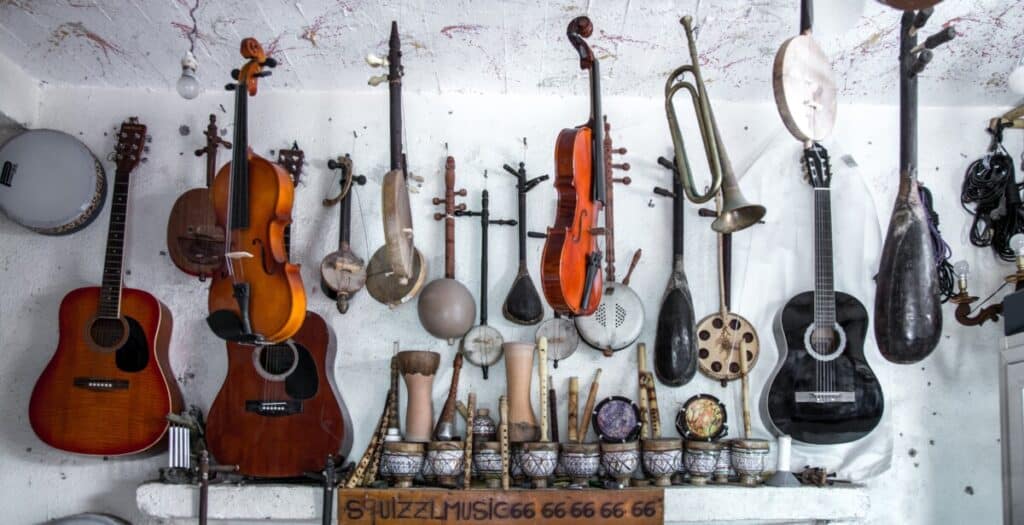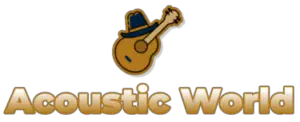
Trying to point to the exact place where one musical genre ends and another begins is a difficult task. In the realm of traditional Irish and Scottish music, bluegrass music, and outlaw country, it is particularly difficult to draw dividing lines.
This is because traditional Irish music has had a huge impact on the development of American bluegrass music and the outlaw country genre. In this article, I want to trace bluegrass music back to its early Irish and Scottish roots to provide new insights into some of the most beautiful and time-honored acoustic music ever produced.
Early Irish and Scottish Influences on Bluegrass Music
When Irish and Scottish migrants came to America, they brought traditional music that would go on to have a massive impact across Appalachian America, namely North and South Carolina, Tennessee, Kentucky, Virginia, and West Virginia: “The people who migrated to America in the 1600s from Ireland, Scotland, and England brought with them the basic styles of music that are generally considered to be the roots of bluegrass music as it is known today” (Bluegrass Heritage Foundation).
The traditional Irish and Scottish music that jump-started the development of bluegrass continues to interact with and influence it today. Contemporary country and bluegrass musicians like Dolly Parton acknowledge this influence:
“In 1994 I recorded a live album entitled Heartsongs: Live from Home. My coproducer, Steve Buckingham, and I wanted to show the close connection of Celtic music from Scotland, Ireland, England, and Wales with what became bluegrass, country, and old-timey mountain music.
We used the finest bluegrass and acoustic musicians from the United States and combined them with one of the greatest traditional Irish groups, Altan. It was a match made in Heaven as the fiddles, guitars, and dobros interacted with the Irish “squeezebox,” uilleann pipes, whistles, and bouzouki. We often found that a song known by the Irish musicians under one title would be familiar to the bluegrass musicians under another title.”
Dolly Parton, From WAYFARING STRANGERS: THE MUSICAL VOYAGE FROM SCOTLAND AND ULSTER TO APPALACHIA by Fiona Ritchie and Doug Orr. Foreword by Dolly Parton. Copyright © 2014 the University of North Carolina Press. Published by the University of North Carolina Press.
New Instruments – Emerging Differences
As Parton acknowledges, the instruments associated with bluegrass have changed significantly over the years from their initial Irish influences. While traditional Irish music was mainly played on the accordion, uilleann pipes, whistles, and bouzouki, bluegrass music makes heavy use of the guitar, the banjo, the dobro or slide guitar, and the mandolin. The fiddle, interestingly, has remained a constant in both styles.
Parton’s anecdote is important and fascinating because she acknowledges that there is a common musical “spirit” of sorts, underlying both traditional Irish music and modern country/western/bluegrass, even given the evolution of different musical instruments over time. Parton further acknowledges the musical overlap by saying she was surprised to find that songs known to one group of musicians would be known by musicians of another genre, simply by a different name.
There are many examples of this musical overlap between traditional Irish or Scottish music with modern bluegrass. One popular tune across all genres is ‘Red Haired Boy,’ the English translation of the Gaelic title being “Giolla Rua” (or, Englished, “Gilderoy”). “The melody is one of the relatively few common to fiddlers throughout Scotland and Ireland, and was transferred nearly intact to the American fiddle tradition (both North and South) where it has been a favorite of bluegrass fiddlers in recent times” (Source). This type of musical overlap illustrates the heavy influence of Irish and Scottish music upon modern bluegrass.
Here’s Tony Rice, a famous bluegrass guitarist, playing his arrangement of Red Haired Boy:
Interesting Lyrical/Thematic Commonalities
We’ve discussed a broad history of Irish and Scottish influence on modern bluegrass, and noted the important musical differences and similarities, both in overlap of songs/melodies, and in musical instruments.
Interestingly, the lyrical themes of modern bluegrass, and even outlaw country music, continue to play homage to their early Irish and Scottish beginnings. Perhaps most noticeable of these lyrical themes is the veneration of outlaws and criminality across these genres.
“Red Haired Boy,” the song previously discussed above, for example, is thought to commemorate a rogue or bandit. We encounter the character of the rogue or outlaw again in the lyrics of the classic Irish tune “Whiskey in the Jar”:
As I was goin’ over the Cork and Kerry Mountains
I saw Captain Farrell and his money, he was countin’
I first produced my pistol and then produced my rapier
I said, “Stand and deliver or the devil he may take ya”
The allure of the highwayman or outlaw has transcended beyond Irish music, enduring into the bluegrass tradition and even into outlaw country, wherein the famous supergroup consisting of Willie Nelson, Johnny Cash, Waylon Jennings, and Kris Kristofferson literally called themselves The Highwaymen. In their most famous song, “Highwayman,” they sing:
I was a highwayman
Along the coach roads I did ride
With sword and pistol by my side
Many a young maid lost her baubles to my trade
Many a soldier shed his lifeblood on my blade
The bastards hung me in the spring of twenty-five
But I am still alive
The similarity between these lyrics and “Whiskey in the Jar,” even if unintentional, is unequivocal. Simply compare “With sword and pistol by my side” to “I first produced my pistol and then produced my rapier.”
This same veneration for and commemoration of the outlaw figure is also ubiquitous in bluegrass music. The Carter Family classic “Johny Hardy” is about a murderer:
John Hardy was a desperate little man
He carried two guns every day
He shot down a man on that West Virginia line
You ought a seen John Hardy getting away
You ought to seen John Hardy getting away
John Hardy stood in his old jail cell
The tears running down from his eyes
He said I’ve been the death of many a poor boy
But my six-shooters never told a lie
No, my six-shooters never told a lie
Similarly, the bluegrass song “Been All Around This World,” which has been covered by everyone from Hot Rize, to Bryan Sutton to the Grateful Dead presents yet another outlaw figure:
Up on the Blue Ridge Mountains it’s there I’ll take my stand,
Up on the Blue Ridge Mountains it’s there I’ll take my stand,
With a rifle on my shoulder, six shooter in my hand,
I’ve been all around this world.
Hang me, oh hang me and I’ll be dead and gone,
Hang me oh hang me, and I’ll be dead and gone,
It’s not the hanging that I mind it’s layin’ in the jail so long,
I’ve been all around this world.
Other classic bluegrass outlaw songs include “Banks of the Ohio,” “Little Sadie,” and “Tom Dooley.”
The “High Lonesome Sound” – A Music of Outlaws, Outcasts, and Outsiders
Given the evidence presented above, it’s clear that bluegrass and country music inherited their veneration for outlaw figures from traditional Irish and Scottis music. But what’s the reason for the prominence and appeal of the outlaw in traditional Irish-Scottish music in the first place?
The outlaw figure is on the fringe of society: he is an outsider, frowned upon and misunderstood by the majority and by authority figures. He is out of place. When the Irish emigrated to America in the 1600s they were, similarly, outsiders, not to mention that they already had a long history of being “other-ized” and discriminated against by the English. Is it such a stretch to think they would feel a kinship and identification with the outlaw figure who is betrayed by law, woman, and establishment, and looked down upon by others?
It seems reasonable that by expressing a theme of the venerable outlaw, Irish and Scottish emigrants were able to use their music to maintain their cultural identity even during their diasporic and turbulent history. Simultaneously, this veneration of outlaw figures went on to greatly influence the development of bluegrass and outlaw country music lyrics in America.
Summary
Modern bluegrass and traditional Irish and Scottish music continue to complement and interact with each other today. One can hear it in the “high lonesome sound” present across these different genres, and it is further evidenced by the fact that modern players still pay homage to bluegrass’ roots by playing reels that hearken back to the Irish and Scottish tradition.
While the instruments associated with traditional Irish music changed as it evolved into bluegrass, many of the lyrical themes have remained the same. These themes are unique and wide-ranging, but one of the most striking and consistent is the veneration of outlaw or highwayman type figures: outsiders who play by their own rules, frowned upon by authority figures and society at large, yet still beloved by some.
I hope that learning about these intersections between all these beautiful musical styles has been interesting and educational for you. Understanding how they are intertwined with each other has deepened my appreciation of this beautiful acoustic music, and I continue to try and learn more about each styles similarities and differences. I hope this article has inspired you to do the same.
If you’re a bluegrass guitarist looking for a new instrument check out my 10 Best Acoustic Budget Guitars or discover the best acoustic strings for country and bluegrass music.
